Your small business is unique, which is why it’s important to have a shipping strategy designed to help you reach reach your goals.
When determining the ideal shipping and fulfillment strategy for your company, remember that shipping is an investment. Prompt, accurate, and affordable shipping will help you build a better relationship with your customers and greatly enhance your chances for repeat business.
Fortunately, if you know where to look, shipping solutions for small businesses can be quite cost-effective. They can help you deliver on time and grow your brand with top-notch customer service. But how do you know who has the best service and postage rates?
Save time and money by printing postage online with Stamps.com. Sign up today for a 4-week trial!
In this comprehensive guide, we cover options for the best shipping for small businesses and explain how you can reduce costs without sacrificing service.
Shipping Challenges for Small Businesses
For small businesses, it’s challenging to compete with major retailers like Amazon and Walmart. These huge companies have the resources and logistics networks to offer fast, free delivery. They have set a high standard which many shoppers expect all retailers to adhere to.
If you operate a small business, you’re probably familiar with some of these common challenges:
- Managing costs, finding the cheapest rate, and leveraging shipping discounts
- Determining how much to charge for the cost of shipping and what services to offer
- Handling returns and shipping labels
- Dealing with international delivery
To overcome these challenges, two main strategies can make all the difference:
- Automation
- Multi-carrier shipping
We’ll show you how these strategies benefit your business and help you save time and money. But first, let’s look at which factors contribute to your overall shipping costs to begin with.
Main Shipping Cost Drivers
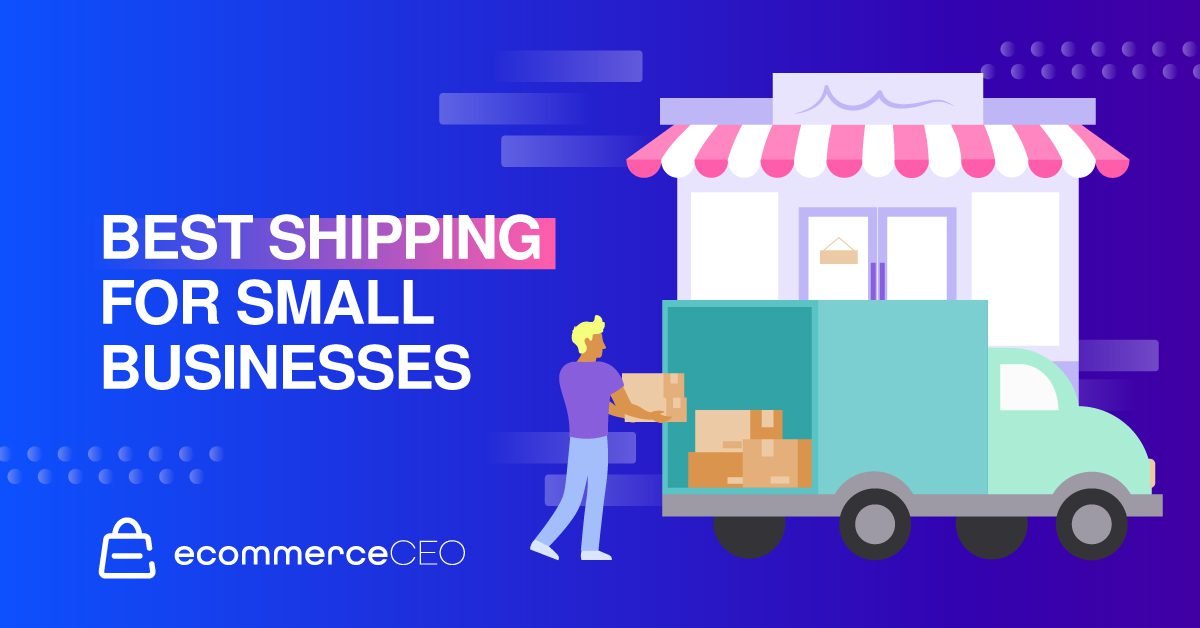
To figure out where you can lower your ccosts, it’s important to understand how they are calculated. Here are the main factors that determine how much you pay to ship your products:
Delivery Speed: How Fast Will Your Customer Receive Their Package?
Up to 60% of consumers say they would wait 5 – 7 days to receive an item if there was free delivery. If you offer express or same-day shipping, chances are you will pay more. To recoup those costs, you have to charge customers more, but the speed of delivery is not as important to customers as spending less money, according to numerous studies.
By offering free shipping and clearly outlining delivery times, customers are happy to wait. Having expedited shipping options available may appeal to some, but the priority should be lowering costs.
Size and Weight: What are the Package’s Dimensions? How Heavy is it?
Every carrier has its own specific criteria and terms to describe the weight and size of packages. In most cases, heavier or oversized items will be subject to additional surcharges.
In terms of weight, packages less than 50 pounds will be charged according to their ‘dimensional weight’ – meaning how much space they take up – rather than how heavy they are. Packages heavier than 50 pounds will be priced according to their weight rather than how much space they take up.
Double-check your invoices to ensure that the right packaging is used. Sometimes carriers determine packaging to be larger than it is and charge you more – and use data analytics to help ensure you are being charged correctly.
Destination: How Far Does the Package Have to Travel?
The further packages travel (or the higher the shipping zone), the higher the costs. It might seem cheaper to pay a few extra dollars to send a package rather than operate out of multiple locations, but all those additional shipping costs add up.
To better manage shipping expenses, consider distributing from a centralized location. Shipping shorter distances will also help you leverage ground shipping solutions rather than more expensive options like air freight. A distributed warehouse network ensures that you can ship items from the warehouse closest to your customer, to get faster delivery with the cheapest shipping.
Shipping Volume: How Many Packages Does Your Company Ship Annually?
Tying in with package destinations, as your order volume increases and you ship from additional locations in different geographic regions, you will reduce shipping and handling costs because orders can automatically be shipped from a facility closest to the shipping destination.
Extra Services: Do You Want Extra Services like Tracking, Insurance, or Flexible Delivery Options?
Extra services cost more. However, it’s possible to find a carrier that offers extras as part of a pricing plan. Rather than paying for tracking and flexible delivery with one company and insurance and other extras with another company, research several different carriers to find one that gives you the most value for money and has a reputation for good customer service.
Here are some important questions to consider when thinking about which cost drivers will affect your shipping:
How Fast Should I Deliver?
In the age of Amazon Prime, rapid shipping has become the norm. Small businesses often cater to niche markets, which means your customers are probably more willing to wait for something they can’t get anywhere else.
Still, it’s important to take consumer preferences into account when deciding what delivery speed you should offer:
- Standard shipping is generally considered 3 to 5 working days
- It’s also a good idea to offer expedited shipping for those who need their order fast
How Does My Shipping Volume Affect Costs?
The more you ship, the more power you have to negotiate better rates with carriers. If you ship a large enough volume, you will often be eligible to receive volume-based discounts from your carrier.
Yet, it may be difficult for small businesses to reach the minimum volumes. For example, USPS (First Class/Priority/Express) requires a minimum of 5,000 shipments in the previous year for a volume-based discount.
Still, there are other ways for small business owners to secure shipping discounts (see “Ways of reducing costs” below).
What if I Need to Ship Internationally?
International shipping is necessary to break into some new markets. There are a few important things to keep in mind, however:
- Import restrictions may apply for some products, such as alcohol or hazardous items.
- Customs fees may apply, and it is important to communicate this to your customer in advance to avoid unpleasant surprises.
- Transparency is always the best approach.
Always be clear and up-front about international shipping costs. Display your international shipping rates and policies clearly to avoid confusion.
How Much Should I Charge for Shipping?
In terms of how you handle shipping costs, you have a few options to consider:
Free Shipping
Everyone loves free shipping, but for small businesses, it often cuts too deeply into your margin. Fortunately, many shoppers who buy from small businesses do not necessarily expect free shipping.
If universal free shipping is not an option for your business, you might consider offering a free-shipping threshold (for example, free shipping on orders above $100). This can make your customers feel like they are getting a deal while also increasing average order size. Win-win!
Flat-rate Shipping
Flat-rate shipping is an attractive option for many small businesses, because it is easy to predict the total cost (especially if all of your packages are usually around the same size and weight).
Start by calculating the average amount that you pay for shipping per order. You can then charge that amount on all orders. Be sure to display the flat shipping rate clearly on your website, so everyone knows how much the shipping costs before they check out.
For large orders, the actual cost of shipping may be higher than the flat rate. The trade off is they spent more money on your site and shipping costs should average out, so everything balances. Customers who place very small orders may overpay slightly for shipping, in comparison.
Which Extra Shipping Services Should I Offer?
You can offer many additional shipping-related services to provide a better shipping experience. Here are a few to consider:
- Tracking: Customers love tracking the status of their package once it’s been shipped.
- Insurance: Most big carriers include insurance as standard (see the comparison of carriers below). If you sell high-value merchandise, you may consider buying additional shipping insurance.
- Flexible delivery: Many people enjoy the flexibility of choosing their own delivery date or redirecting a package that is already in transit.
Choosing services like these depends entirely on your customers’ preferences, the price they (and you) are willing to pay, and the type of merchandise you sell.
Ways of Reducing Costs
There are many ways to lower your shipping costs as a small business owner. For example:
- Automate shipping processes
- Secure volume-based discounts
- Negotiate other discounts
- Take advantage of real-time rate fluctuations
- Lower your return shipping rate
- Use flat-rate packaging
Automating Shipping Processes With Software
Shipping software enables you to save time and money by automating tasks like generating shipping labels, selecting the cheapest carrier based on an order’s specifications, or automatically notifying customers of their shipping status.
Shipping Easy
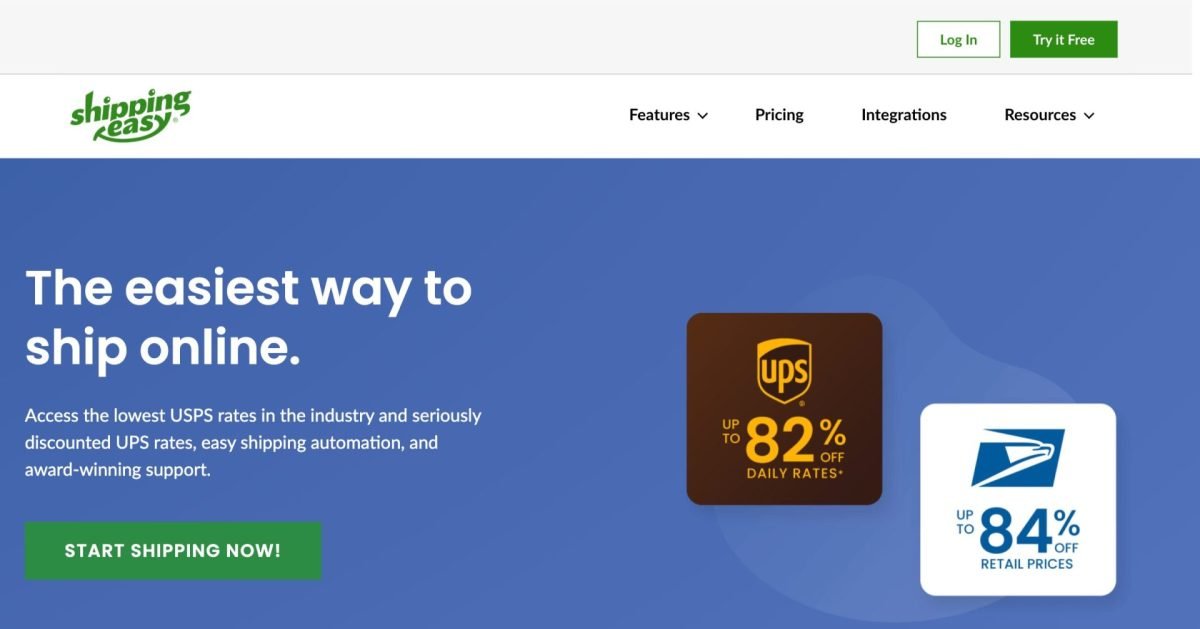
Shipping Easy is a popular shipping software that simplifies the process of managing and fulfilling orders for online businesses. It handles order management, label printing, and tracking, making shipping a breeze for merchants.
ShipStation

ShipStation is a web-based platform that helps ecommerce businesses streamline their shipping processes. With ShipStation, users can import orders from multiple online marketplaces and shopping carts, automate shipping labels and tracking numbers, and consolidate operations into a single platform.
ShipEngine
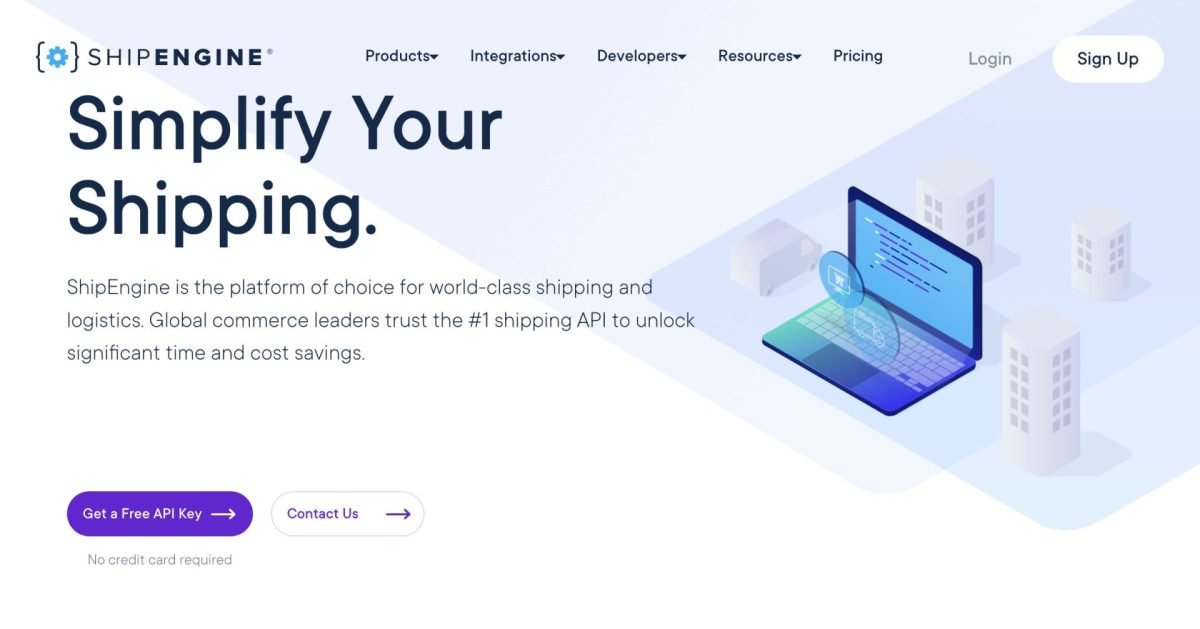
ShipEngine is a powerful shipping API and software platform that helps businesses streamline their shipping process. It integrates with the major carriers, allowing businesses to compare rates, print labels, and track shipments all in one place.
SendCloud
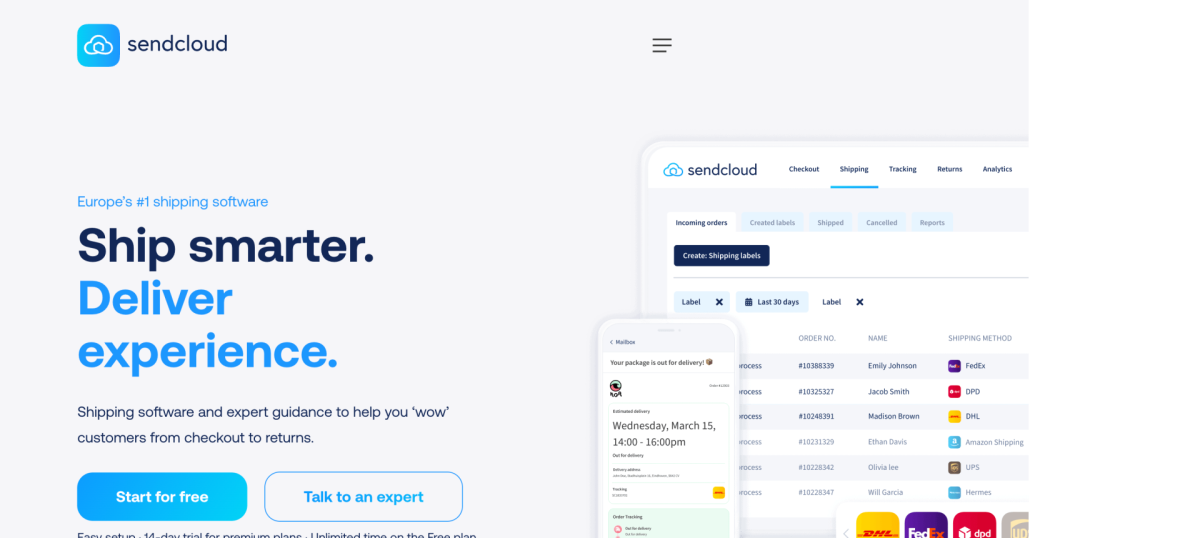
Sendcloud is a cloud-based service that businesses use to send large volumes of emails to their customers. With Sendcloud, companies can send emails efficiently, securely, and without getting flagged as spam. This service offers various features such as email tracking, template creation, and personalized email campaigns.
Volume-Based Discounts
As mentioned above, if you ship a large enough volume, you can negotiate with your carrier for a volume-based discount. But another option is to work with a shipping platform like Sendcloud, which gives you access to even more volume-based discounts.
Teaming up with a shipping platform is advantageous for small businesses because it enables you to secure volume-based discounts that you would not have access to on your own.
Other Discounts
Most major carriers, including UPS and FedEx, Each carrier has some version of a small business shipping solution where they offer loyalty programs that entitle you to discounts. Some carrier loyalty programs may entail a minimum order or an obligation for you to use one specific carrier exclusively.
UPS and FedEx also offer discounts to retailers who sell via certain third-party logistics (3PL) partners, such as the Walmart Marketplace.
Real-time Rate Changes
When shipping rates change due to fluctuations in the market, peak-period pricing, or other factors, you can save money by automatically switching to the cheapest carrier. This is another great advantage of using a shipping platform or automated shipping software in your shop.
Lowering Your Return Shipping Rate
Return shipping is a major expense. But you can minimize the risk of returns by optimizing your product pages. Ensure that your product descriptions are highly detailed and include plenty of photos and videos showing the product in action. This ensures that the customer knows exactly what they’re buying, reducing the risk of returning it.
Use Flat-Rate Packaging
All major carriers offer flat-rate packaging, which you can use to ship your merchandise as a small business owner. These are prepaid packages of a standard size that you order in bulk from the carrier. Simply package your products inside the flat-rate box, and you’re ready to ship. Just remember that weight restrictions may apply.
Best Shipping Methods for Small Businesses
So, now that we’ve covered the most important shipping strategy topics, you’re probably wondering: What’s the best way to ship for small businesses?
The biggest shipping trend for small businesses in recent years is a multi-carrier strategy.
What Is Multi-Carrier Shipping?
With a multi-carrier strategy, you can work with a selection of different carriers instead of just one. This not only gives you more options, but you will have a backup should anything go wrong with one service.
With multiple carriers at your disposal, you can react with greater speed and flexibility, and also choose the lowest rates. Combined with the right shipping software, a multi-carrier shipping strategy is ideal for most small businesses.
Just be aware of any bulk order incentives that your preferred carrier may offer. Sometimes, doing the majority of your business with a single shipping company can have its perks!
How Does Multi-Carrier Shipping Work?
In the old days, if you wanted to work with multiple carriers, you’d need a lot of extra paperwork and programming to make that happen. This was a time-consuming and difficult task.
Modern shipping platforms for ecommerce are designed to accommodate the multi-carrier strategy. They let you integrate multiple carriers automatically to take advantage of the best rates and service options.
Many of these platforms even let you set rules for which carrier to use under which circumstances (for example, [Use USPS for domestic shipping under 10 pounds] and [Use DHL for international shipping]). This way you can save money and fulfill orders faster without the extra work!
Best Shipping Companies for Small Businesses
So, what is the best shipping company for small businesses to use? Each carrier has its own strengths, which is why no single service has a monopoly on shipping. As mentioned above, taking advantage of these different strengths in a multi-carrier strategy ensures you get the best rates and service every time.
Below is a comparison of the most popular carriers and the services they offer.
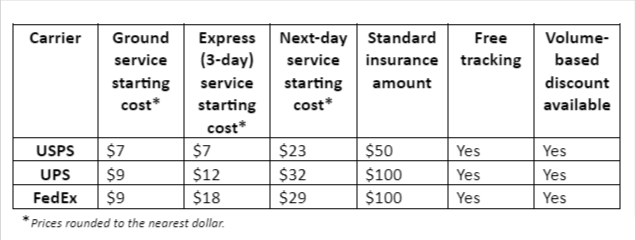
Overall:
- For parcels up to 1 pound (16 ounces) in weight, USPS First Class Mail offers the best rates.
- USPS Priority Mail often offers the best rates for parcels up to 10 pounds. Flat-rate service from USPS Priority Mail is particularly attractive for small businesses.
- For large packages and freight, especially internationally, FedEx and UPS are the way to go.
USPS
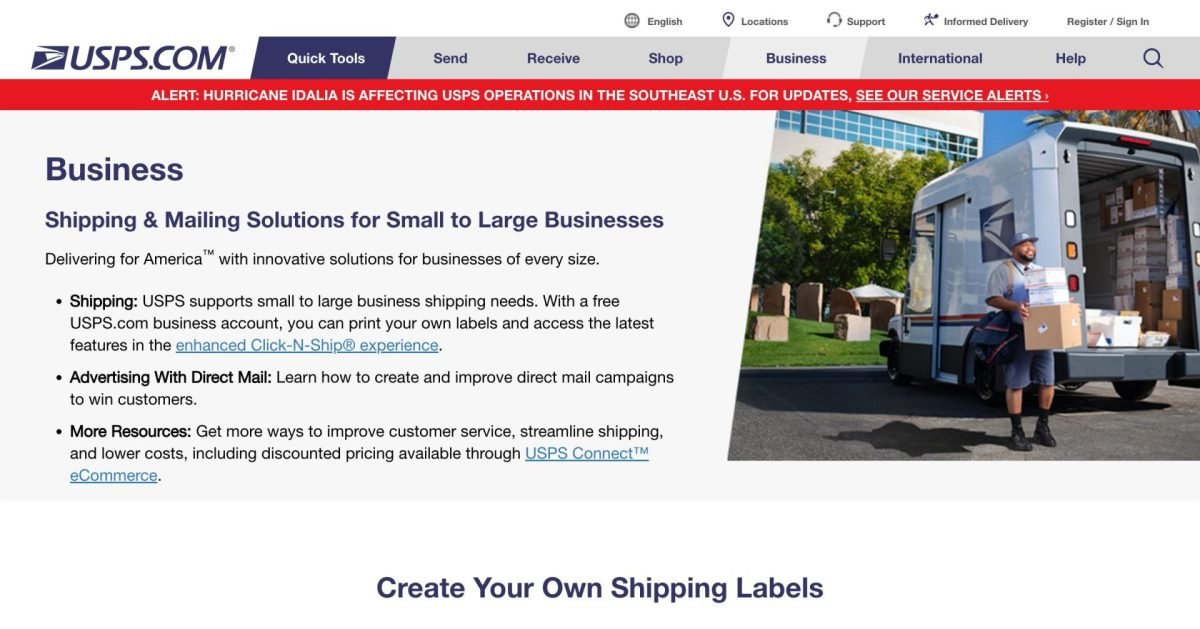
The United States Postal Service is an independent agency of the federal government responsible for providing postal services in the U.S. USPS offers a wide range of services, including sending mail and packages across the country. With its extensive network and infrastructure, USPS is an essential part of the nation’s communication and logistics system.
UPS

UPS is a global package delivery and supply chain management company. It is one of the largest and most recognized shipping companies in the world. UPS offers a wide range of services including package delivery, freight transportation, and logistics solutions. UPS is an industry leader, operating in over 220 countries and territories.
FedEx

FedEx is a multinational courier service known for its reliable and efficient shipping services. With a vast network and strong reputation, FedEx has become a trusted name in the logistics industry. Whether it is delivering packages locally or internationally, the company offers a range of services, including express shipping, ground shipping, freight services, and even specialized solutions for industries such as healthcare.
DHL
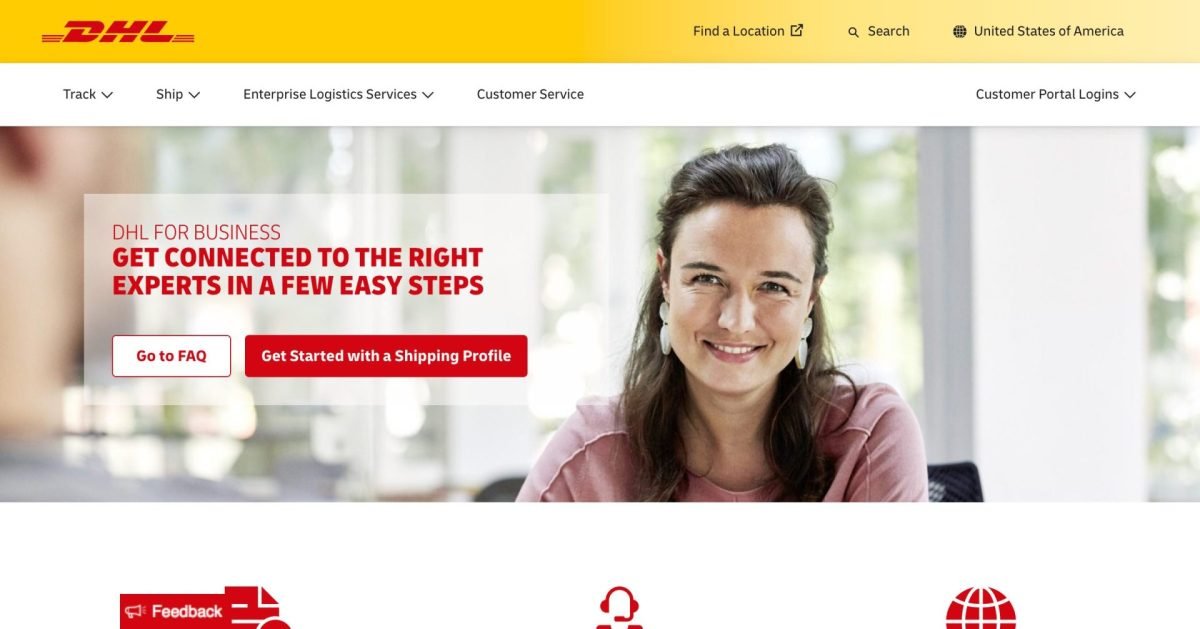
DHL is a global logistics company that provides international shipping and courier services. With a vast network and veteran experience in supply chain management, DHL offers reliable transportation solutions for businesses and individuals worldwide.
Fast, Flexible and Customer-Friendly
Now that you know more about designing a smart shipping strategy, you can be confident in your decision of finding the lowest shipping rates with the best service for your small business.
To summarize:
- Free shipping is a crowd-pleaser, but it’s not a requirement. You can still stand out from competitors by offering excellent service and unique quality.
- Consider a free-shipping threshold or flat-rate shipping if free shipping is not an option for your business.
- Using shipping software to automate the shipping process can lower costs from multiple carriers while taking advantage of volume discounts and real-time rate fluctuations.
- A multi-carrier strategy gives you more options for finding the fastest, cheapest, and most flexible service.











